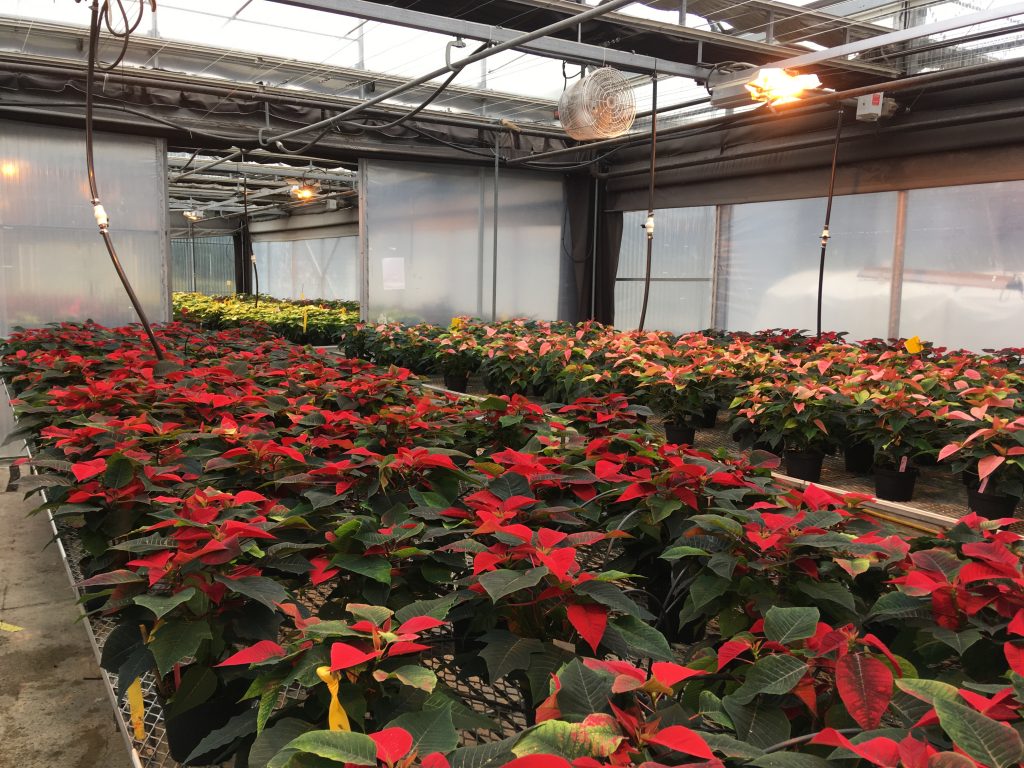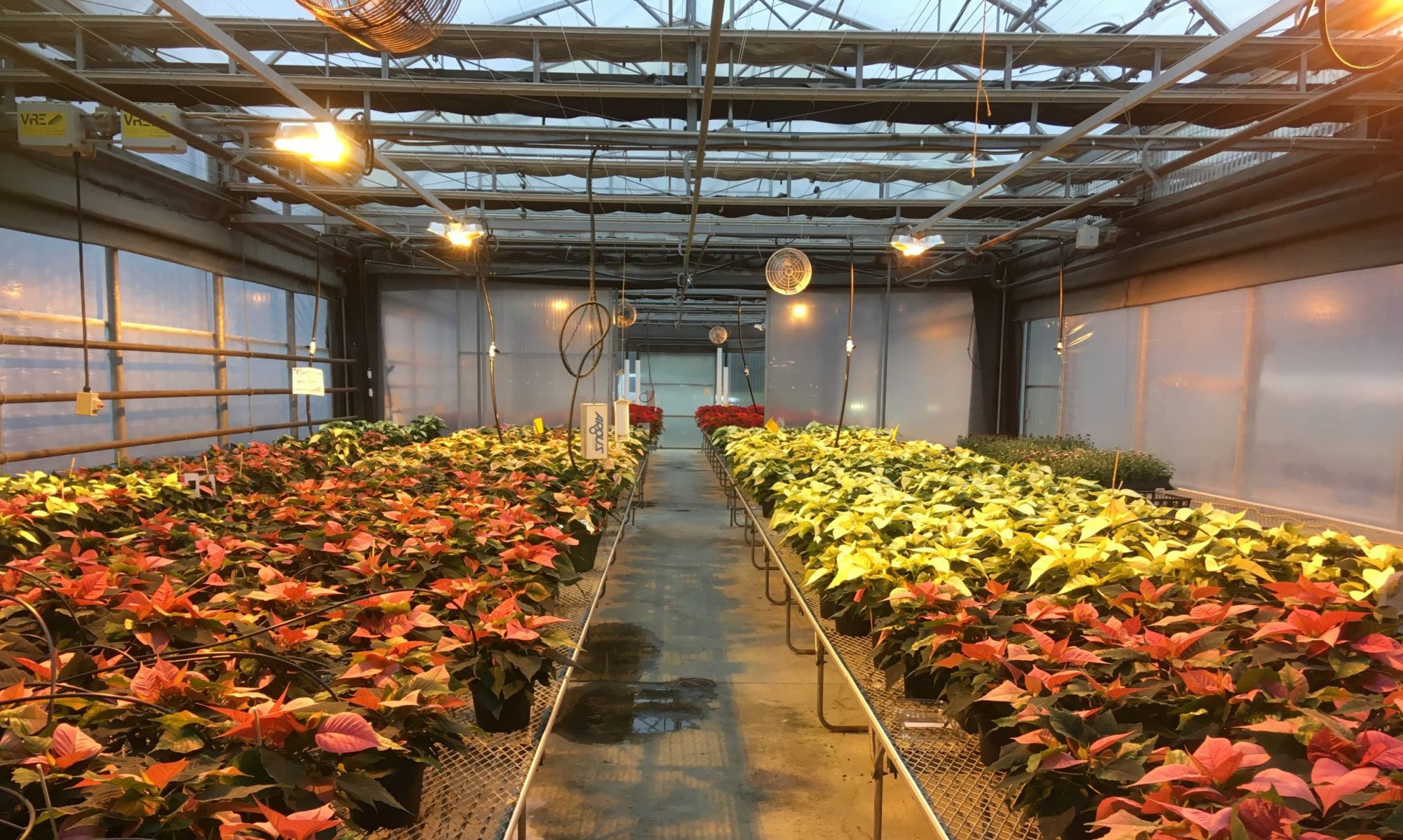We’re sold out … well, nearly.
I’ve taken the sales order form off of the website due to high demand! I’ve crunched the numbers and we only have 100 poinsettias left! I still get emails outside of the website order form for poinsettias and we need to save some to donate to spread some holiday cheer!

Two weeks before sales
Environmental Conditions:
This week we had typical November weather, cloudy and rainy with a few glimpses of sunshine. It’s critical that we have the supplemental lighting in order to ensure our crop is getting enough light – especially in the dreary weather of November. This week I dropped the heating and cooling setpoints in the day and night periods to start hardening off our poinsettias for sales. Next week I will drop them by 1C again. The reduction in temperature will help set the colour before sales in week 49.
Day: Heating Setpoint 19C | Cooling Setpoint 22C
Night: Heating Setpoint 17C | Cooling Setpoint 19C
Supplemental Lighting:
We are running a 9-hour day and a 15-hour night to trigger the plants into generative growth. This is essentially what is going to turn our poinsettias red, white, or pink. We just finished week 5 of our blackout period and are seeing colour change throughout the crop and the plants trend towards generative growth.
Hours of Black Out: 15 hours – 5pm to 8am
Nutrient:
EC target is 1.5 – 2.0 pH target is 5.7 – 6.3
EC: 1. 5 – 1.8
pH: 5.4 – 5.7
Watering/Fertilizer:
The students checked the water requirements of the plants on Tuesdays and watered accordingly to each cultivar’s needs. Factors such as fan placements, cultivar location, plant size and proximity to heat pipes influenced this decision. In our last two weeks of production, in addition to lowering the temperatures, we want to stop fertilizing and apply clear water to our plants. This will ensure we flush any salt build up from the plants before we transport.
Observations:
- This week will be the first week that we did not apply any beneficial insects to our crop. Since we are only two (2) weeks away from sales we didn’t want to add any more beneficial insects since it would increase the cost of our inputs and likely not make too much of an impact on our crop. We know that using beneficial insects takes time and a lot of pre-planning since it takes a longer amount of time for our beneficial insects to become established compared to the pest insects. Overall, there was still a downward trend of fungus gnats and whitefly populations in the greenhouse, which also influenced our decision to not apply any more beneficial insects.
2. Students took height measurements this week and our entire crop average (all cultivars) is still slowly increasing. However, we have noticed a tapering off of plant growth as we near the end of our production schedule and as our plants have become established in their generative growth. This result is to be expected since we lowered the temperatures, and we know that temperature directly impacts plant height (growth). Other impacts that temperature will have on our crop is helping the plants harden off for transport and solidify colour of the bracts.
3. We have started our sales section of our course and have been discussing how to grade poinsettias for sale. We checked in on our unpinched plants and compared them to our pinched plants – all students decided they would rather have a pinched poinsettia rather than an unpinched poinsettia since they are more uniform and have more colour bracts. The pinched poinsettias have more bracts because we removed the apical dominance of the highest growing point and the lower lateral/secondary buds are now competing for dominance. This results in a well rounded and bushy poinsettia.

4. Our 4” crop is still delayed in colour response and are overcrowded in their trays. We tried to mitigate this issue this week by spacing out the 4” plants even further and I think it will make a different on our final product. We will be using these plants in our seasonal plants. You can see the proto-type below.

10″ jumbo Poinsettia 
Seasonal Planter
5. We saw the first signed of flower colour in the crop this week. This is to be expected as we near the end of our production cycle. This indicates to us that the plants have responded to the full black out period. This also tells us that we should drop the temperatures further until our sale date to hold the plants.


